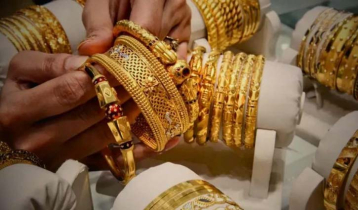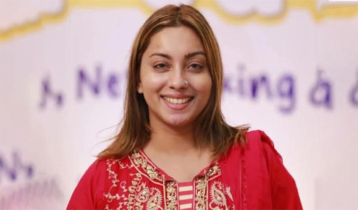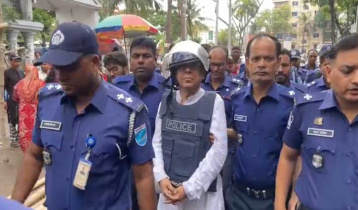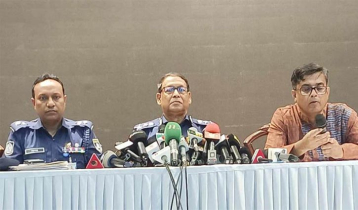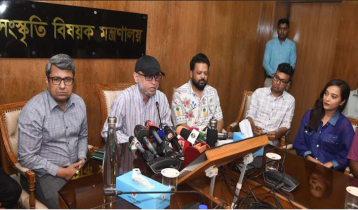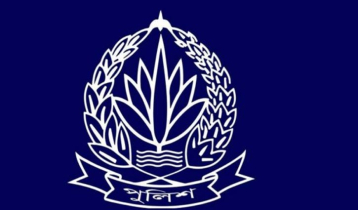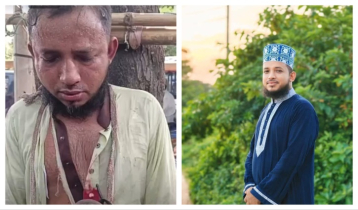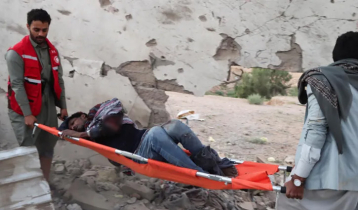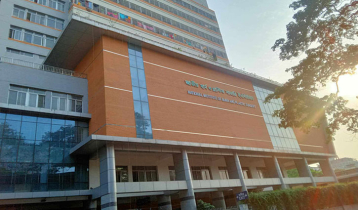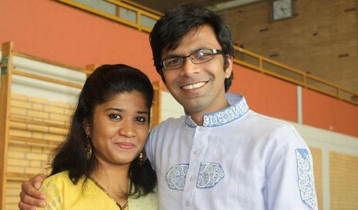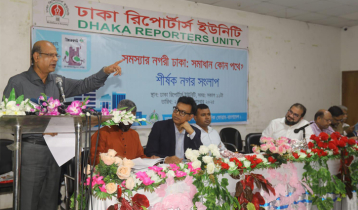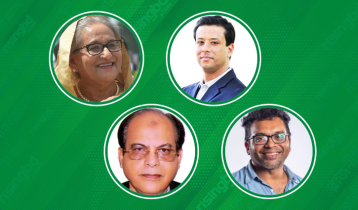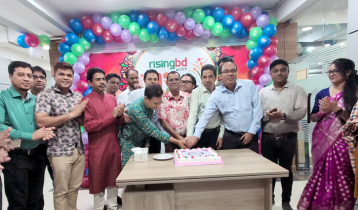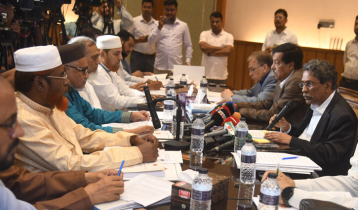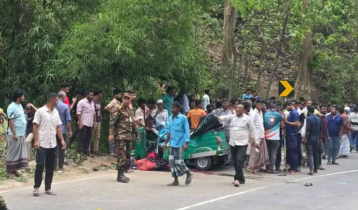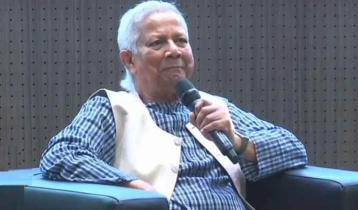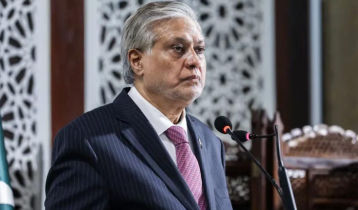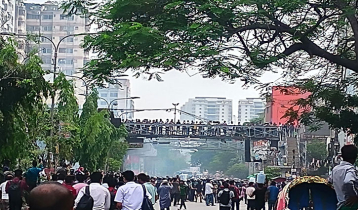Yasmin a symbol of fight against crime perpetrators
Manzurul Alam Mukul || risingbd.com
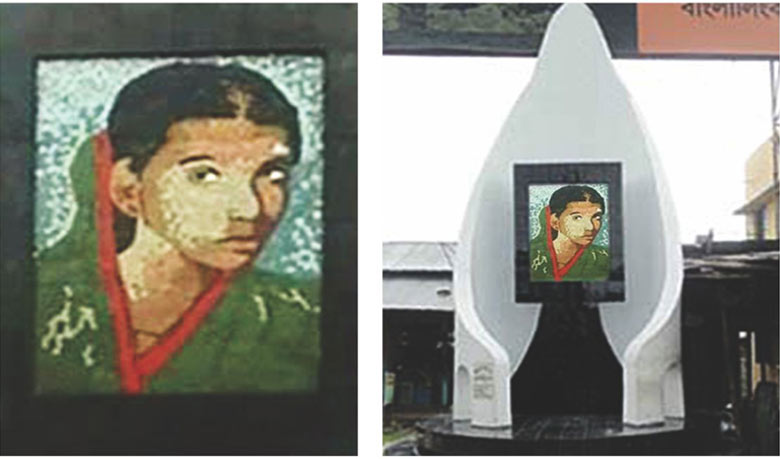
As a South Asian country, Bangladesh is no different from its neighbors. Violence against women is amongst the most serious threats and its estimated prevalence rate of violence against women is extremely high. Due to a lack of reliable base-line surveys, the exact number of women affected by violence is unknown, but it is the reality that it is an obstacle to the achievement of equality, development and peace.
However, reports indicate that Bangladesh has one of the highest rate globally despite advancements of Women`s Rights and a strong history of women’s movements. Deeply embedded in cultural and socio-economic practices, violence against women is sanctioned by both society and the state, in the name of culture, tradition and religion.
The status of women has been ranked the lowest in the world on the basis of twenty indicators related to health, marriage, children, education, employment and social equality. Bangladesh is not out of the indicators. In our society, girls are often considered to be financial burdens on their families, and from the time of birth, they receive less expenditure in their healthcare and education.
With the advent of puberty, differences in the ways that adolescent girls and boys are treated become much more pronounced. At puberty, girls’ mobility is often restricted, which limits their access to livelihood, learning and recreational and social activities.
Women have less economic opportunities to improve their lives. They are often restricted in terms of education, ownership of wealth, monetary return for their work, financial opportunities, and opportunities to influence the decision making at the level of the family and the society.
Women’s lives more than men’s are centered at home. They tend to be more excluded from the society at large. Women’s education in Bangladesh lags far behind than that of men. According to a survey it is found that among the total students in the public universities, only 24.3 percent were female students.
In our society, there is a strong belief that a son should be educated because, unlike a daughter who after her marriage shifts to another family, he has need to support his aged parents and other family members. For such beliefs, most families prepare the girls for marriage.
Child marriages are a violation of human rights that disproportionately affects girls. Child marriages also violate other human rights including education, freedom from violence, reproductive rights, etc. A study found that after the marriage, a child could not satisfy her husband’s various demands. As a result, they are to face hardship of mental and physical torture. Though the practice of child marriage has decreased in Bangladesh but it remains common in rural areas and urban slums, especially among the poor.
Although the dowry practice is illegal, it is common for the bride’s family to pay a dowry to the family of the groom. There is evidence that the practice of dowry is becoming more common in our society.
As Bangladesh’s socio-cultural environment contains pervasive gender discrimination, women are victims of inequality, abuse, oppression and exploitation, social customs and traditions. Widespread violence and repression in numerous forms put women’s lives at risk in almost all parts of the country.
In recent times, when we look on media we are to see stories of brutality, death, torture, atrocities, fear, repression, death, etc and most of the victims are women and children. The brutal incidents including killing of children and women and torture on them, taking place one after another, are shaking the whole society and raising various questions.
Crime exists in all societies, but there is a way about crime. But a section of people in our country have now taken it to a different degree, a child was shot in her mother`s womb and beating women through tying to trees.
According to Bangladesh Human Rights Commission, in the seven months from January to 30 July this year, 3063 killings took place. There were 131 rapes and 32 were killed after being raped. And 49 were killed for dowry, 295 in domestic violence, 288 in social violence, 195 in political violence, and 373 mysterious deaths.
According to Mahila Parishad, in July alone 368 women were victims of oppression. This included 83 rapes, 15 gang rapes, 9 murders after rape, 19 attempted rapes and 10 cases of sexual harassment.
Yasmin Akhter has more or less been forgotten. 20 years after her death, most people don’t even know the name of the young girl whose gruesome death provoked a mass movement and brought women’s rights issues to forefront. In the backdrop of present situation, voices must be raised under the platform created through the death of Yasmin with a view to building a safe environment for women.
Resistance Day for Repression Against Women
On November 25, 1960, three Dominican sisters, political activists known as the Hermanas Mirabal, were brutally assassinated for opposing the Trujillo dictatorship. The International Day for the Elimination of Violence against Women remembers this day and The Convention for the Elimination of All Forms of Discrimination against Women (CEDAW) was adopted by the United Nations on December 18, 1979.
Yasmin Akhter, a poor 14-year-old domestic worker, had to face brutality, and she is a symbol of fight against crime perpetrators in Bangladesh. Yasmin was brutally murdered before she was raped by three policemen in Danajpur 20 years ago on August 24, 1995.
To remember this day, to protest the brutally and to create awareness, since 1996, the day has been being observed in Bangladesh as Resistance Day for Repression Against Women or Yasmin Day.
Different political and socio-cultural organisations take elaborate programmes marking the day.
What happened on ill-fated Yasmin
On 23rd August afternoon in 1995, Yasmin Akhter rode on a Dhaka-Thakurgaon coach, just to see her mother Sharifa Begum in Keradangi of Dinajpur. The 14-year-old domestic worker got down with a co-passenger youth at Dash Mile bus stop, where she took some milk and bread at a tea-stall and waited for another bus to reach her mother`s residence.
It was approximately at 4:00 am, a police patrol van reached there, and ASI Mainul, constable Sattar and driver Amrit Lal arrived at the spot. They forced Yasmin to go with them claiming that they would reach her safely to her destination. She was ganged-raped by policemen in the van. At one state, she jumped from the running van. The police personnel, being alarmed, further picked her up and killed her. Her body was found at the roadside in the morning and the entire district of Dinajpur rose up against the police and the local administration.
Unsurprisingly, the local police tried to block investigation processes and at first had even refused to lodge the case in an effort to save their colleagues.
However, in the meantime, the accused police personnel filed a ‘false’ unnatural death case, saying, the girl died out of jumping from running van. To establish this false statement, a police officer arrived at the spot, intentionally unclothed the girl and examined her sexual organs with a stick before the crowd. Later on, the body was moved to the hospital for autopsy. The physician concerned issued an intentional medical report, mentioning that Yasmin was not raped.
The dead body of the girl was buried at SK Jahangir Graveyard as an unidentified one by the help of Anjuman-e-Mofidul Islam. By 24-25th August, Dinajpur police succeeded in discovering an identity for the girl, and police described Yasmin as the floating prostitute ‘Banu’.
Protests flared up across the country, forcing the government to take action. Dinajpur city went on trembling with a number of processions and demonstrations, owing to resentment amongst all sections of people, political parties and social organizations. As a people`s movement emerged, police action was brutal and curfew was imposed. Lathi-charge followed by firing killed seven local people (27-28 August). Public outrage swelled. The police station was besieged, and the arrested processionists were freed from police lock-up by members of the public.
After continued protests and movements by activists and citizens, a board was finally formed consisting of principals of some medical colleges. On August 29, Yasmin`s body was exhumed for a second autopsy. On August 30, second autopsy report disclosed that Yasmin died of gangrape.
Judgment process
The proceedings of the case started on September 21 in 1996 at Dinajpur District and Session Judge`s court. After prayer from the accused the case was transferred to Rangpur District and Session Judge`s court.
In the charge sheet it was stated that three of the accused raped Yasmin, strangled her to death, and fled from the place of occurrence. On such grounds, a case under the Women and Child Repression Act was filed against them. On August 31, 1997, the verdict was issued in this sensational case by the session judge of Rangpur, Md. Abdul Matin. By this judgment, main three culprits were sentenced to death while the other six were acquitted because all these persons, in eyes of law, committed no material illegality or irregularity.
On September 1, 2004, seven years after the pronouncement of the verdict, the convicts S.I Mainul Islam and constable Abdus Sattar were hanged in Rangpur jail. This is the first time in the history of this part of the subcontinent that policemen were executed.
Pickup van driver Amrit Lal was hanged till death following the court order on August 31 in 2007. It can be here mentioned that Amrit Lal was absconding for a good many years before he was finally captured.
Repression continues
A 2013 United Nations study based on anonymous interviews with more than 10,000 men aged 10 to 49 years from Bangladesh, China, Cambodia, Indonesia, Sri Lanka and Papua New Guinea showed that nearly a quarter of the men surveyed in this region have said that they raped a woman at least once in their life. Almost three quarters of those who admitted rape said they did not experience any legal consequences.
To promote Women ́s Human Rights and prevent any form of violence against women, the state must ensure a number of prerequisites in every sphere of life that women enjoy all the human rights and fundamental freedom. These include gender equality, improvement of service delivery, resolving allegations of discrimination, providing adequate health care, women’s participation in decision-making at all levels and women empowerment, punishment to the offenders accountable for their actions, etc.
Finally, it can be said that Yasmin has gone but her death has created a platform to not only launch a dialogue but actually realize a safe environment for women. Until our society, our law enforcers, the state and the world at large begin to realize women as actual human beings, not just as someone’s mother, sister and wife we will continue to see various heinous crimes against women.
Risingbd/DHAKA/Aug 24, 2015/Mukul
risingbd.com






